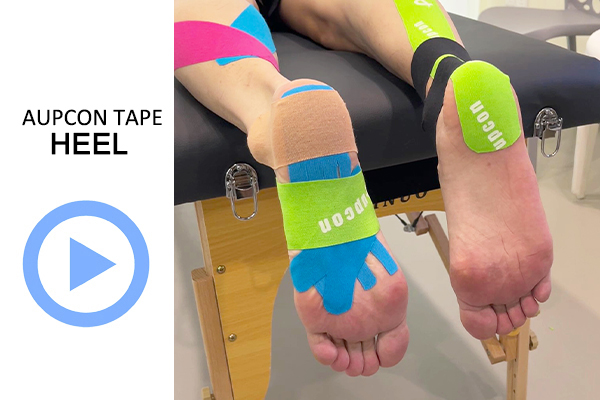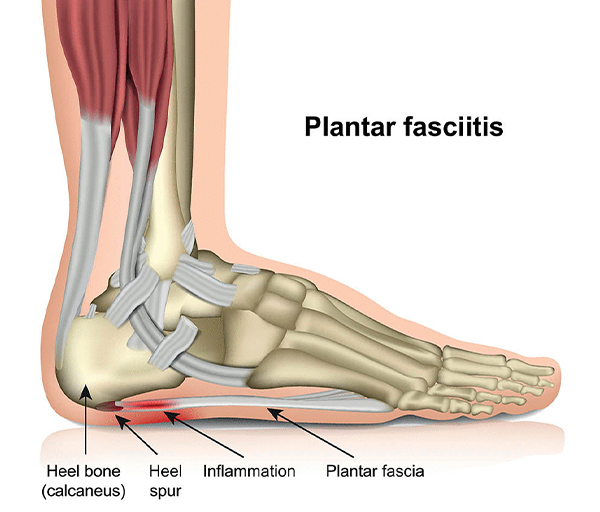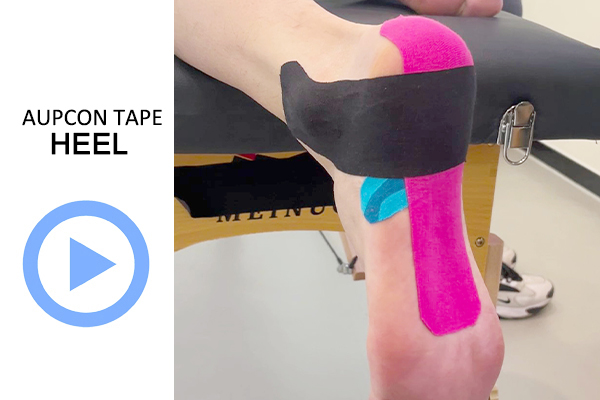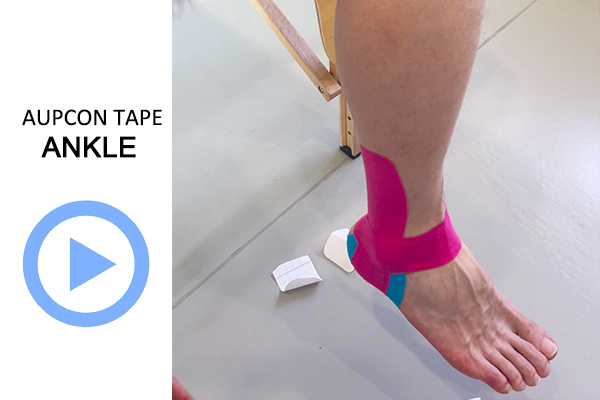Come applicare il nastro kinesiologico per la fascite plantare?
Fascite plantare
La fascite plantare è un dolore lancinante nella parte inferiore del piede, vicino al tallone, che può sconvolgere la tua vita quotidiana, dal formicolio alle piante dei piedi durante la corsa mattutina al fastidio costante. Questo tutorial analizzerà in modo approfondito la tecnica del taping della fascia plantare per la fascite plantare e ti darà un'idea dei potenziali benefici e dei suggerimenti per l'applicazione di nastro kinesiologico.
Nastro kinesiologico TAPING TIPS
- Per prolungare la durata del nastro kinesiologico per la fascia plantare, pulire la pelle prima dell'uso.
- Per garantire una tenuta sicura, tagliare i quattro angoli con le forbici da nastro kinesiologico per evitare che cadano.
- Non toccare la superficie adesiva durante l'applicazione del nastro adesivo per evitare di comprometterne l'aderenza.
- Dopo l'applicazione, strofinare più volte il nastro per la fascia plantare per farlo aderire.
- Evitare l'uso prolungato e sostituirlo entro 3-7 giorni.
- Non applicare sulla zona interessata se è presente una ferita aperta sui piedi.
Come si fascia il piede per la fascia plantare?
Fissare la parte inferiore del nastro kinesiologico a forma di artiglio sul tallone.
Allunga ciascuno dei quattro nastri per la fascia plantare del 50% per adattarli alla pianta del piede.
Quindi, allungare la fascia a forma di X 75% per avvolgere le piante dei piedi.
Completare lo stretching e l'adattamento dei quattro piccoli lati della fascia plantare del nastro kinesiologico a forma di X.
Allungare la fascia plantare del nastro kinesiologico a forma di I con 75% al centro.
Avvolgere le estremità del nastro fasciale attorno alle caviglie sinistra e destra.
Allungare l'ultimo pezzo di nastro kinesiologico fascia plantare 75% in modo che si adatti al centro della pianta del piede.
Cos'è il nastro kinesiologico per la fascia plantare?
I principali effetti del nastro kinesiologico sulla fascia plantare
- Migliora la circolazione sanguigna: l'applicazione del nastro sulla fascia plantare può sollevare il tessuto cutaneo, migliorando così il flusso sanguigno nella zona infiammata, aiutando a trasportare ossigeno e sostanze nutritive, favorendo la guarigione e alleviando il dolore.
- Ridurre l'infiammazione: il nastro kinesiologico plantare fasciale può influenzare il sistema linfatico. La riduzione dell'infiammazione può alleviare il dolore e la rigidità del tallone.
- Ridurre il dolore: il nastro kinesiologico può fornire input sensoriali alla pelle e al tessuto sottostante della fascia plantare. Attivare il meccanismo naturale di sollievo dal dolore del corpo e ridurre efficacemente la sensazione di dolore.
- Migliorare il supporto del piede: l'uso del taping fasciale può fornire un delicato supporto all'arco plantare, riducendo potenzialmente la pressione sulla fascia plantare e alleviando il dolore.
Nastro kinesiologico in cotone
per la fascite plantare
→
Nastro kinesiologico per fascite plantare
Cotone 95% e spandex 5% + colla acrilica giapponese
Domande frequenti
La fascite plantare è un'infiammazione asettica della fascia plantare. È una comune malattia del piede, nota anche come fascite plantare. Questa malattia è solitamente divisa in fascite plantare traumatica e fascite plantare non traumatica. La fascite plantare traumatica è ulteriormente divisa in tipi acuti e cronici.
La fascite plantare è solitamente causata da un uso eccessivo o da una lesione della fascia plantare. Camminare, correre, stare in piedi per molto tempo, indossare scarpe inappropriate, ecc., sono cause comuni di fascite plantare. I gruppi ad alto rischio includono maratoneti, ballerini e alcuni gruppi professionali che devono stare in piedi e camminare a lungo.
Il sintomo principale della fascite plantare è un dolore acuto locale nella parte anteriore e interna del tallone. Il dolore è pronunciato nei primi passi della camminata mattutina, camminando a lungo, correndo o stando in piedi a lungo. Dopo un'adeguata terapia di massaggio o riposo, il dolore sarà alleviato o scomparirà.
Utilizzare la tecnica del taping della fascia plantare descritta in questo articolo ti aiuterà a guarire da questa condizione.
Sì, il nastro per la fascia plantare può aiutare a trattare correttamente la fascite plantare, soprattutto se combinato con altri trattamenti. Ecco perché la tecnica del taping per la fascia plantare fa parte di un piano di trattamento più ampio. Presenta diversi vantaggi:
Benefici del taping per la fascite plantare:
Sollievo dal dolore: il nastro kinesiologico sulla fascia plantare può ridurre la tensione sulla fascia plantare e può aiutare ad alleviare il dolore nella parte inferiore del piede durante la camminata quotidiana.
Supporto: il nastro kinesiologico sulla fascia plantare può fornire un delicato supporto all'arco plantare, riducendo lo stress corporeo e favorendo il recupero.
Migliora la circolazione: la fascia plantare con nastro kinesiologico può aumentare il flusso sanguigno e il drenaggio linfatico, contribuendo a ridurre l'infiammazione e il gonfiore.
Previene gli infortuni: stabilizza il piede e riduce al minimo i movimenti eccessivi che possono peggiorare la condizione.
Postura corretta: questa opzione a basso rischio e senza farmaci può aiutare a correggere la scarsa percezione del piede e i pericoli dei piedi piatti.
Fasciare il piede di notte può trattare efficacemente la fascite plantare, ma questo dipende dal metodo e dal livello di comfort. Fasciare o indossare il bendaggio fasciale di notte è generalmente progettato per alleviare il dolore mattutino e la rigidità causati dalla fascia plantare e dai muscoli del polpaccio tesi.
Funziona molto bene per molte persone perché impedisce alla fascia di irrigidirsi durante il sonno, fornisce un delicato supporto all'arco plantare e riduce la pressione sulla fascia plantare.
Varia da persona a persona, quindi chiedi al tuo fisioterapista di consigliarti il metodo e l'orario migliori per l'uso notturno.
Il tempo di guarigione della fascite plantare può variare a seconda della gravità della condizione e del trattamento. Ecco una cronologia generale:
Casi lievi
Tempo di recupero: 2-4 settimane.
Trattamento: riposo, stretching, bendaggio, ghiaccio, antidolorifici da banco e scarpe comode.
Casi da moderati a gravi
Tempo di recupero: 3-6 mesi o più.
Trattamento: tecnica di taping della fascia plantare, ortesi personalizzate, stecche notturne e cambiamenti nello stile di vita.
Casi cronici
Tempo di recupero: 6-12 mesi o più.
Trattamento: può comportare interventi più avanzati come iniezioni di corticosteroidi, terapia con onde d'urto extracorporee (ESWT) o, in rari casi, intervento chirurgico.
Altre parti del corpo
Il nastro kinesiologico per la fascia plantare può aiutare ad alleviare la fascite plantare, ma ci sono varie cause del dolore al piede e il metodo di applicazione del nastro varierà. Questo articolo presenta solo un metodo di applicazione del nastro. Se vuoi saperne di più sul dolore al piede, resta sintonizzato per il nostro tutorial su come usare il nastro kinesiologico per il tuo ginocchia, spalle, polsi, caviglie, tacchi, ecc. Per altri tutorial correlati, puoi aggiungere il nostro sito ai preferiti e restare sintonizzato.





